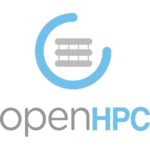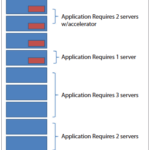Today Bright Computing announced it has joined the Linux Foundation and will participate in the OpenHPC Community project. “Many of our HPC customers incorporate both commercial and open source management regimens on clusters based on Intel Xeon Scalable processors,” said Trish Damkroger, Vice President and General Manager, Technical Computing Initiative at Intel Corporation. “By supporting OpenHPC packages in their software, Bright Computing will help enable HPC practitioners assemble the ideal management framework for their needs.”
Resource Management Across the Private/Public Cloud Divide
This is the final entry in a insideHPC series of features that explores new resource management solutions for workload convergence, such as Bright Cluster Manager by Bright Computing. This article highlights how resource management systems that can manage clusters on-premises or in the cloud greatly simplify cluster management. That way, different tools do not have to be learned for managing a cluster based on whether it is located in the company data center or in the cloud.
HPC System Management: Scheduling to Optimize Infrastructure
Whether the application is floating-point intensive, integer based, uses a lot of memory, has significant I/O requirements, or its widespread use is limited by purchased licenses, a system that assigns the right job to the right server is key to maximizing the computing infrastructure. We continue our insideHPC series of features exploring new resource management solutions for workload convergence, such as Bright Cluster Manager by Bright Computing. This article discusses how scheduling can work to optimize infrastructure and improve HPC system management.
The 3 Types of Cloud Computing for HPC Systems Management
Three types of clouds have been developed: public clouds, private clouds and hybrid clouds. We continue our insideHPC series of features exploring new resource management solutions for workload convergence, such as Bright Cluster Manager by Bright Computing. This article explores the three types of cloud computing, as well as how cloud computing can work to reduce CAPEX.
Bright Computing Release 8.1 adds new features for Deep Learning, Kubernetes, and Ceph
Today Bright Computing released version 8.1 of the Bright product portfolio with new capabilities for cluster workload accounting, cloud bursting, OpenStack private clouds, deep learning, AMD accelerators, Kubernetes, Ceph, and a new lightweight daemon for monitoring VMs and non-Bright clustered nodes. “The response to our last major release, 8.0, has been tremendous,” said Martijn de Vries, Chief Technology Officer of Bright Computing. “Version 8.1 adds many new features that our customers have asked for, such as better insight into cluster utilization and performance, cloud bursting, and more flexibility with machine learning package deployment.”
Clusters & Cloud Computing: Speeding up HPC Systems Management
We continue our insideHPC series of features exploring new resource management solutions for workload convergence, such as Bright Cluster Manager by Bright Computing. This article focuses on how clustering servers and utilizing cloud computing can help your enterprise achieve more flexibility and speed — as well as improve HPC systems management.
Successfully Managing Workload Convergence in Your Data Center
Modern enterprises are being challenged to implement new technologies and produce results faster without increasing their IT budgets. This is the first a series of features exploring new resource management solutions for workload convergence, such as Bright Cluster Manager by Bright Computing.
University of North Texas turns to Bright Computing for Efficient Cluster Management
Today Bright Computing, a global leader in cluster and cloud infrastructure automation software, is proud to announce that the University of North Texas (UNT) has integrated Bright Cluster Manager into its HPC environment for research support. The University uses this 350-node cluster to optimize efficiency for researchers working on groundbreaking discoveries in a variety of domains material science, engineering, chemistry, and physics. Bright Cluster Manager helps UNT’s University Information Technology department successfully provision, monitor and manage heterogeneous clusters.
Bright Computing Announces Integration with IBM Power Systems
Today Bright Computing announced that Bright Cluster Manager 8.0 now integrates with IBM Power Systems. “The integration of Bright Cluster Manager 8.0 with IBM Power Systems has created an important new option for users running complex workloads involving high-performance data analytics,” said Sumit Gupta, VP, HPC, AI & Machine Learning, IBM Cognitive Systems. “Bright Computing’s emphasis on ease-of-use for Linux-based clusters within public, private and hybrid cloud environments speaks to its understanding that while data is becoming more complicated, the management of its workloads must remain accessible to a changing workforce.”
Fayetteville State University Leverages Bright Cluster Manager for AI Research
Fayetteville State University is using Bright Cluster Manager for ground-breaking Artificial Intelligence research. Bright Cluster Manager enables the University to deploy complete clusters over bare metal and manage them effectively. Managing the hardware, operating system, HPC software, and its users is done with an elegant easy-to-use graphical user interface. With Bright Cluster Manager, IT/system administrators can quickly get clusters up and running and keep them running reliably throughout their lifecycle.







